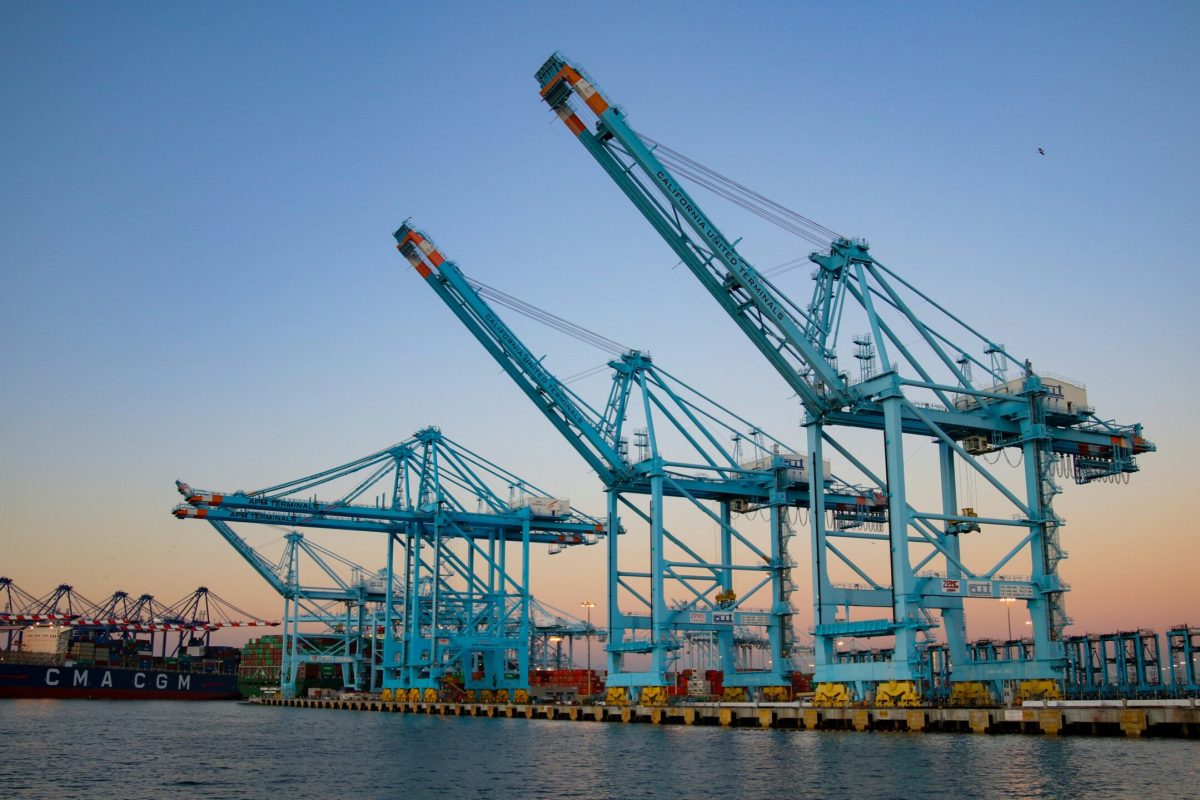Los Angeles has long been a hub of innovation and ambition. This year it marked a milestone in the nation’s renewable energy journey: the first onshore wave energy pilot project in the United States. Located at AltaSea at the Port of Los Angeles, the installation by Eco Wave Power shows how the natural motion of waves can be harnessed—right along existing port infrastructure—to produce clean electricity. What began as a demonstration is shaping into a vision for how coastal cities can meet future energy needs while advancing sustainability. By harnessing the steady power of ocean waves, the pilot shows how a natural force can be transformed into reliable, clean energy.
How the LA Port Pilot Works
The system is both practical and innovative. Seven steel floats are attached to the side of an unused wharf, a site that once stored oil. Each float acts as an energy conversion unit, pumping fluid into hydraulic cylinders. The resulting pressure drives a motor, which powers a generator to produce electricity.
Currently, the output is modest—enough to serve about 100 homes—and the pilot is not yet connected to the grid. The two-year program will provide valuable data on energy production, durability, and environmental impact. For Eco Wave Power, supported by AltaSea and co-funding from Shell, this is just the beginning. If successful, the vision is to extend the floats along eight miles of San Pedro’s breakwater. That could generate up to 60 megawatts of power—enough for roughly 60,000 homes. At that scale, the project would make a meaningful contribution toward Los Angeles’ goal of 100 percent clean electricity by 2035 and provide relief for communities near the port that have long endured pollution from heavy industry.
Why Wave Energy Matters for California
The Los Angeles pilot highlights the potential of wave energy as a complement to solar and wind. Unlike solar, which depends on daylight, or wind, which fluctuates with weather, waves provide a steadier and more predictable resource. Because the system attaches to existing structures such as wharves and breakwaters, it avoids the need for large offshore platforms and reduces environmental disruption. Diversifying energy sources is essential, and wave power offers a consistent option that complements wind and solar.
In fact, the project underscores three key advantages of wave energy:
- Consistency: Waves continue long after the sun sets and often when winds are calm, offering a reliable supplement to other renewables.
- Efficient Use of Infrastructure: By building on existing port facilities, the technology reduces costs and minimizes new construction.
- Lower Environmental Footprint: Nearshore installations are designed to limit impacts on marine ecosystems compared to offshore alternatives.
Together, these qualities make wave power an attractive addition to California’s energy portfolio. It strengthens the resilience of a grid that is rapidly shifting to cleaner sources. By showing how waves can supplement other resources, Eco Wave Power’s onshore design illustrates how new technologies can help meet state and national needs. The pilot also shows how ports can play a vital role in addressing climate change by adding renewable sources that strengthen the grid.
Challenges Facing Wave Energy Projects
Like any emerging technology, wave energy faces hurdles before it can be widely adopted. Installing a pilot of this kind required years of planning, permitting, and regulatory approvals. Cost is another concern: solar and wind are already competitive, while wave energy must prove it can scale affordably. Site suitability also matters—wave heights, coastal geography, and local infrastructure all affect whether a location can host wave systems effectively.
Despite these challenges, the Port of Los Angeles project is an important proof of concept. It brings together innovation, collaboration, and community benefit in a highly visible way, positioning Los Angeles as a leader in exploring new renewable solutions.
The Bigger Picture
Beyond its technical potential, this initiative carries symbolic and practical importance. Ports are often associated with heavy emissions from ships, trucks, and cargo handling equipment. Generating clean electricity on-site helps offset those impacts and improves air quality for nearby neighborhoods. The project also shows how old infrastructure—once tied to fossil fuels—can be reimagined for sustainable use.
The pilot doubles as a public demonstration. Visitors to AltaSea can watch the floats rise and fall with the waves, a tangible reminder that the ocean’s natural rhythm can be converted into usable power. This visibility fosters public awareness and support, both of which are essential for advancing renewable technologies.
Blue Floats: Innovation on Display
The blue floats are more than just pieces of energy equipment—they are a living demonstration of how clean technology can be integrated into everyday settings. Positioned along a wharf once tied to fossil fuel storage, the floats symbolize a shift from legacy energy infrastructure toward a sustainable future. Their visibility makes them a natural tool for education and outreach, showing students, policymakers, and the public how wave energy is captured in real time.
This accessibility matters. Many renewable systems—whether wind farms offshore or solar panels in remote deserts—operate out of public view. By contrast, these floats sit right at the edge of a major port, where visitors can see clean power being generated from the ocean’s motion. That transparency helps build public understanding and trust in new technologies, a critical factor in scaling up renewable solutions across California and beyond.
A New Wave of Clean Energy at the Port of LA and Beyond
The next two years will be critical in determining the future of wave power at the Port of Los Angeles. The project must show consistent performance, confirm its low environmental impact, and demonstrate pathways to reduce costs at scale. If it succeeds, Los Angeles could see its breakwaters transformed into a productive clean energy asset capable of supplying tens of thousands of homes.
More broadly, the project fits California’s leadership role in sustainability efforts. By pioneering marine energy in a high-profile port, the city creates a model for other coastal communities to study and replicate. With interest already growing in states like New Jersey and Oregon, and with Eco Wave Power testing systems internationally, Los Angeles may be setting the stage for a new wave of renewable innovation.
The Port of Los Angeles pilot project is small today, but its implications are far-reaching. By showing how waves can be turned into watts, the initiative offers a glimpse into a cleaner, more resilient energy future. If successful, it could mark a turning point not only for Los Angeles but for the broader adoption of marine energy across the United States.
In a city defined by both its shoreline and its spirit of innovation, the project is a reminder that the ocean—long a source of inspiration and commerce—may also become a source of sustainable power.


